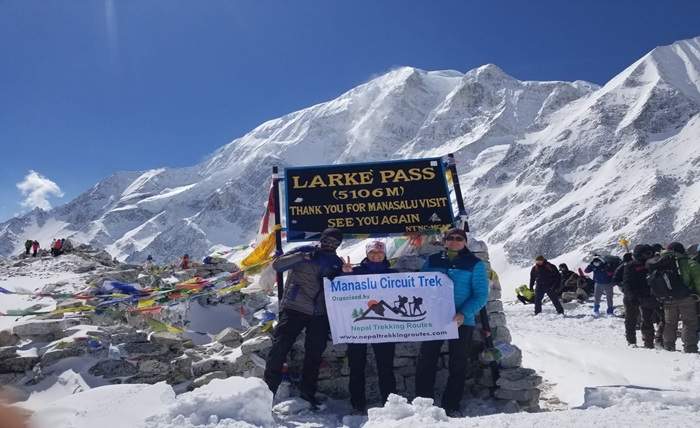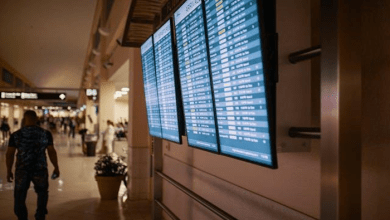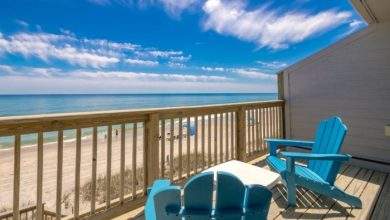
The Manaslu Circuit trek is a thrilling journey around the world’s eighth-highest mountain, Mount Manaslu. It offers a unique blend of pristine natural beauty and cultural immersion. It is a popular choice among adventurers who seek remote and peaceful alternatives to the commercialized route like Annapurna Circuit. The breathtaking Himalayan views, the crossing of the Larkya La Pass and richness of Tibetan-influenced culture are the highlights of this trek.
Choosing the perfect timing for the Manaslu Circuit trek significantly impacts your experience. Factors like weather conditions, trail accessibility, and scenery vary according to the season. This article will break down which seasons are ideal
Each season offers a unique experience, from vibrant rhododendron bloom in spring to lush greenery in summer or Clear Mountain views in autumn or snowy landscapes in winter. No matter what you choose, you will get something memorable out of the trek.
Overview of seasons
- Spring (March-May): Spring has moderate and stable weather. The trails are adorned by blooming rhododendrons which adds beauty to the trek. The wild animals are active and can be spotted easily.
- Summer/Monsoon (June-August): Summer or monsoon is known for heavy rainfall. The trails are wet and slippery. This season also features lush greenery and cascading waterfalls.
- Autumn (September-November): Autumn is the most popular trekking season. It offers the clearest views. This post-monsoon season features vibrant landscapes and dry trails.
- Winter (December-February): Winter features cold temperatures and harsh weather in higher altitudes. The daytime is manageable while nights are freezing. It offers snowy landscapes.
Trekking in Best Seasons
Spring and autumn are considered the peak seasons for trekking in Manaslu Circuit. Here are the pros and cons of each season:
Spring (March to May):
Spring is one of the best times for trekking. The weather is moderate, and the temperature is mild and comfortable. The blooming flora along the trail transforms the landscape into vibrant red, pink, and white hues.
Pros
Lush greenery:
After the dormancy of winter, the plants and vegetation grow into a lush greenery during spring.
Vibrant Landscapes:
The rhododendron blooms cover the forests and transform into vibrant landscapes, adding beauty to the trail.
Good visibility:
The skies are clear and visibility is good. You can enjoy the spectacular views of the mountains.
Wildlife Encounter:
Wild animals come out of their hibernation and become active. Birds begin nesting and migrating in response to the warmer temperatures.
Cons:
Crowd:
Due to the popularity of the season, the trails can be crowded.
Higher Costs:
Due to the higher demand for accommodation and guide services, the costs can increase.
Autumn (September to November)
Autumn is also one of the peak seasons for trekking. This post-monsoon season has clear skies and minimal rainfall. These are perfect conditions for mountain views.
Pros:
Panoramic views:
Spring is the best time for panoramic views of snow-capped mountains.
Vibrant trail:
Due to peak trekking seasons, the communities on the trail are vibrant with harvesting activities and welcoming trekkers.
Festivities:
Major festivals of Nepal are celebrated in this season. You can experience the traditions and culture through festivals like Dashain and Tihar.
Cons:
Crowds:
This season has heavy crowds, especially in October. The trails and teahouses get busier.
Price hike:
Due to higher demand for accommodation and services, there can be a price hike.
Trekking in Challenging Seasons
Summer and winter are considered off-seasons for trekking in Manaslu Circuit. Here are the pros and cons of each season:
Summer/Monsoon (June to August):
Summer coincides with the monsoon season in Nepal. This season is hot and high in humidity. It brings frequent rain which makes the trail wet and slippery. There is a risk of landslides and leeches on the trail.
Pros
Fewer trekkers:
Due to the adverse weather conditions, there are fewer trekkers on the trail. You can have more solitude.
Lush landscapes:
The rain rejuvenates the greenery and transforms the landscape into lush green.
Cons
Muddy Trails:
The heavy rain causes muddy trails which are difficult to navigate.
Poor visibility:
The skies are mostly cloudy which causes poor visibility. The mountain views are obscured.
Leeches and Bugs:
Due to humidity, leeches and mosquitoes are active in this season which is a nuisance for trekkers.
Winter (December to February):
Winter is another challenging season for trekking. The temperature is cold and freezing at night. The trails at higher altitudes will be covered with snow. High-altitude passes like Larkya La may be blocked and impassable.
Pros:
Quiet trails:
Winter has fewer trekkers and quiet trails. It is suitable for those seeking peace and solitude.
Serene Landscape:
The landscape is covered in the blanket of snow and the environment is tranquil.
Unique beauty:
The beauty of winter is unique and pristine with frost on bare tree branches and icicles hanging from rooftops.
Cons
Harsh Conditions:
During winter, it is extremely cold with temperatures dropping below freezing level. It requires additional warm clothing and preparation.
Shorter Days:
The days are shorter and you cannot cover long distances during the daylight.
Factors to Consider when choosing the Best Time
Weather and Temperature Preferences:
Weather conditions are one of the important factors to consider when deciding the right season. If you prefer stable weather and clear skies then choose spring or autumn. If you can tolerate the cold, then winter may be suitable for you. If you enjoy rain and sunshine then summer is best for you.
Crowd levels:
Your choice also depends on the crowd level. Avoid peak seasons like spring and summer if solitude is important for you.
Flora and Fauna:
If you are a nature fanatic and have an interest in blooming flowers, wildlife, or lush landscapes then spring and monsoon are the perfect choice.
Experience Level:
Your experience level also determines which season is best for you. Beginners might prefer spring or autumn for stable weather. Whereas for experienced and seasoned trekkers, any season can be perfect.
Expert Recommendations
Spring Vs Autumn
Both spring and autumn are ideal seasons for trekking to Manaslu Circuit. Spring offers vibrant flora whereas autumn offers fall colors.
Tips for summer and winter treks
Summer and winter require more preparation and additional gear. For summer, take sun hats, waterproof clothing, a poncho, rain cover, and insect repellent. For winter, carry warm clothing and micro spikes or crampons in addition to the usual trekking gear.
Hiring Guide and Porter:
It is mandatory to hire guides for the Manaslu Circuit Trek. They provide help and support to navigate the trek safely, especially during off-seasons.
Conclusion:
The Manaslu Circuit trek is a challenging adventure. The best time to trek depends on the weather conditions and individual preferences. Spring offers vibrant flora and fauna. Summer offers lush greenery and tranquility. Autumn offers clear skies and stunning mountain views. Winter offers solitude and a serene landscape. Each season offers unique experiences.
Planning your Nepal trekking with a reputable trekking agency like Nepal Trekking Routes ensures your safety and comfort. Choose the season that suits you best according to your priorities and preparation level.




